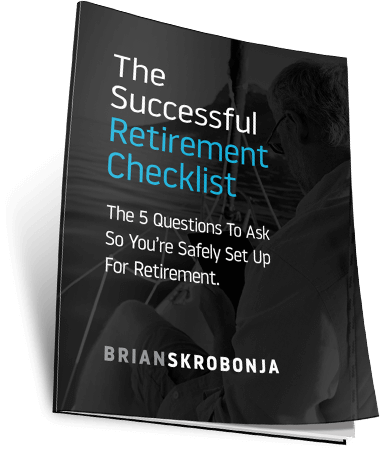The use of life insurance and what type to buy is widely debated. Knowing what type of policy to purchase, and how much insurance to carry is critical, as is knowing which will work best for your situation.
The first step in determining how much coverage you need is to identify the specific reason you want the coverage. Are you simply covering a debt or obligation, or do you want to replace an income to support loved ones?
Now, the second step is to determine what type of coverage you should have by first understanding how long you need or want the coverage to last. Do you only need coverage for a few years, or do you need it long term?
Typically the responsibility of having children leads to requiring coverage for a specified period of time, such as from the time a child is born up to the time she graduates from college. A more long-term example of life insurance coverage is when you have a pension that will stop if you die, which would leave a spouse in need of additional income sources. In these examples, life insurance acts as the replacement source of income if you were to die.
The third step is to determine how much you want to spend on the coverage and recognizing whether or not you have surplus assets that you want to save into the short term or intermediate categories of your financial plan. This is important because the inherent design of a life insurance policy allows for cash accumulation options, which can be used for specific purposes and helps to narrow down the type of life insurance policy to use. We will discuss this more in a moment.
So, to make the best decision for yourself, it would be helpful for you to have a general understanding of the basic types of life insurance and how they can fit into your overall financial plan. Here are outlines of the different types of life insurance, along with the good, bad, and ugly for each type.
Term Life Insurance
Term insurance is the most common and least expensive form of insurance in terms of pricing. For a few dollars a month, you can have hundreds of thousands of dollars in life insurance. People often use this form of insurance when they want to cover the need for life insurance for a specific term (hence the name). These programs can be for a single year or can range up to thirty years before they expire.
The expiration is the drawback to this type of coverage. Although the premiums are lower than any other form of life insurance, the coverage is for a set period, and once the period is over the coverage stops. That means that all the premiums paid along with the coverage are gone. There is no value to the contract unless you die within the term.
Whole Life, or Permanent Life Insurance
The most traditional form of life insurance is a whole life or permanent policy. This policy carries the highest premium of all policy types, requiring a larger cash outlay to own. The difference between a whole life policy and a term policy is that a whole life policy often does not have an expiration date. The contract is guaranteed to be in place until you die, as long as you make the fixed level premium.
In addition, the policy, in its traditional participation structure, offers dividend payments along with a guaranteed cash value, while a term contract has no value other than its death benefit. The cash accumulation characteristics of the contract helps the policy owner offset the higher premiums and over time can achieve earnings ranging from three to five percent. If held long enough, the policy’s cash value may exceed the premiums paid, making the policy an efficient form of long-term insurance.
Universal Life Insurance
A hybrid type of policy is known as a universal life policy. This type of policy was created to substitute the use of a traditional whole life policy at a time when interest rates were high which drove the industry to create a program that could benefit from rising interest rates. Unlike a whole life policy, which accumulates cash through guarantees and dividends, universal life is driven by interest rates.
How this works is that the insurance company declares an interest rate for the policy for a specified period (typically a year) then adjusts the rate year to year, depending on the interest rate environment at the time. The policies will normally carry a minimum rate, which can vary but is usually around two or three percent. The premiums for this type of policy are often slightly less than a whole life policy, but can be more than a term contract. These policies are similar to whole life policies, since they provide life insurance coverage until you die (provided the varying premiums are paid).
The main drawback to this type of policy is the unpredictable interest rate environment, along with the internal increase in life insurance cost each year. While a whole life policy’s premiums are internally fixed, a universal life policy has a flexible premium, which can be adjusted to accommodate a lower payment into the policy. This can be good, but it can also be a bad thing since most plans I have seen are underfunded and tend to lapse.
Variable Universal Life Insurance
Universal life was a popular product at a time when interest rates were high, but as interest rates declined, the policy’s appeal diminished, leading insurance companies to design a program with more appeal. That is when a variable component was added to the program, which removed the insurance company’s obligation to commit to a set rate and tied the earnings of the contract to the stock market.
A variable universal life policy helps people satisfy the need for life insurance without sacrificing the need and desire to invest. This policy allows people to do both, which is very appealing to a lot of investors.
The drawback to this contract is the fees. All life insurance comes with a cost for the insurance coverage, but with a variable life policy, there are added fees associated with it that can be a drag on the policy, if used for investment purposes. I will not get into all these fees here, but understand that this type of contract is reserved for people who have money to invest, and who may not qualify for other traditional tax-favored investments such as Roth IRAs.
A word of caution about this type of contract—since there is an investment component to the policy, a drop in value due to market fluctuation can jeopardize the death benefit if the cash value diminishes, and the internal cost of insurance cannot be covered. (Although many contracts come with a guarantee for the insurance benefit, this guarantee typically does not last the entire life of the contract.)
I do want to clarify my position on all of these types of life insurance policies. There are many circumstances when one type of policy would be used over another. I am not promoting one over the other, nor am I criticizing one over another. As with every recommendation I make, the determining factor is understanding how the decision fits into your personal purpose for the money and identifying how that decision will propel you toward fulfilling your goals. There is never a one size fits all solution.
If you have a question let me know. I receive a lot of money related questions and do my best to answer questions within 24 hours or so.
Good Luck!
Brian
A policy change may incur fees and costs, and may also require a medical examination.
The article and opinions in this publication are for general information only and are not intended to provide specific advice or recommendations for any individual. We suggest that you consult your accountant, tax, or legal advisor with regard to your individual situation. Kalos Capital, Inc. does not provide tax or legal advice. The opinions and views expressed here are for informational purposes only. Please consult with your tax and/or legal advisor for such guidance.







